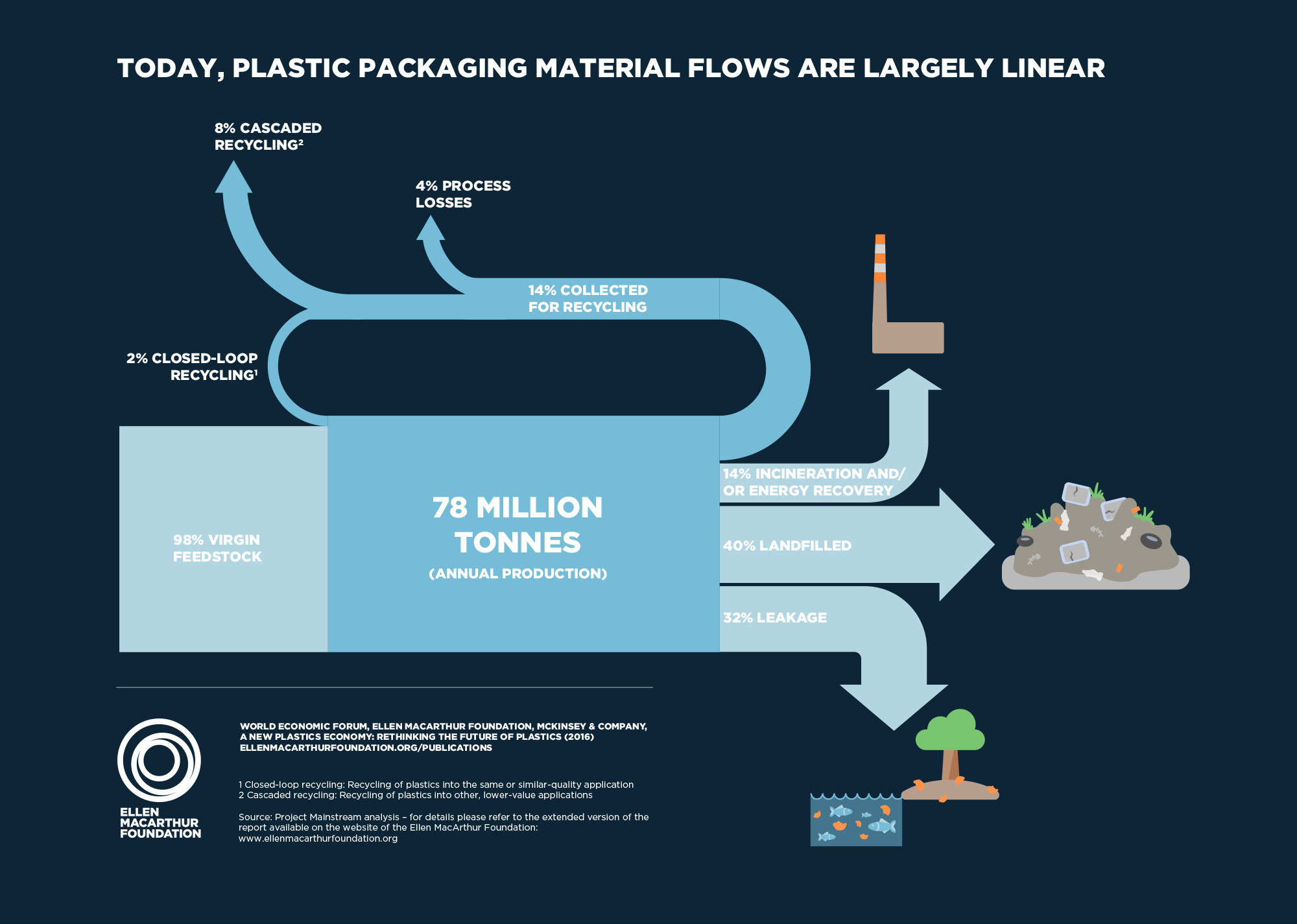At EcoPackables, our core mission is inspired by The Ellen Macarthur Foundation's Circular Economy. Solving the current packaging waste crisis is a time-sensitive challenge that requires a methodical approach; we need to make sure that we are solving problems rather than creating new ones.
Our selection of innovative biodegradable and recycled films are the perfect solution for any brand looking to make a cost-effective reduction in their footprint. Built to run on existing plastic packaging converting machinery, our compostable D42 films provide a seamless integration into all flexible supply chains. They are certified by the TUV and BPI to meet North American, European, and Australasian standards for Home and Industrial Composting.

No two applications are alike, which is why we prioritize in the printability of our films, without compromising sustainability. All our inks are water or soy-based, and free of any digital printing techniques. Upon the degradation of our Plant-Based Films, they return water and organic biomass to landfills and compost sites, allowing for circular re-uses of this material.
The five steps below guide our product development and long-term vision:
Step 1: Reduce excess plastic packaging waste. If there's no need for an extra polybag, get rid of it.
Step 2: Create reuse models where necessary, reducing the need for single-use packaging. This can also be more profitable for businesses as the initial cost is divided up between extended uses.
Step 3: All packaging that we create is designed to be 100% reusable, recyclable, or compostable. It is important that they fit within our current recycling and composting infrastructure.
Step 4: Over time, existing plastic shouldn’t be made from finite resources (petroleum), and should be made from responsibly managed renewable resources. Additionally, their entire manufacturing process should be powered by renewable energy.
Step 5: All packaging is free from hazardous chemicals, and the health, safety, and rights of all people involved are respected.
Above is a graphic that shows the extent of the problem we are trying to solve. By raising awareness about packaging waste, we can help drive more sustainable innovation.

